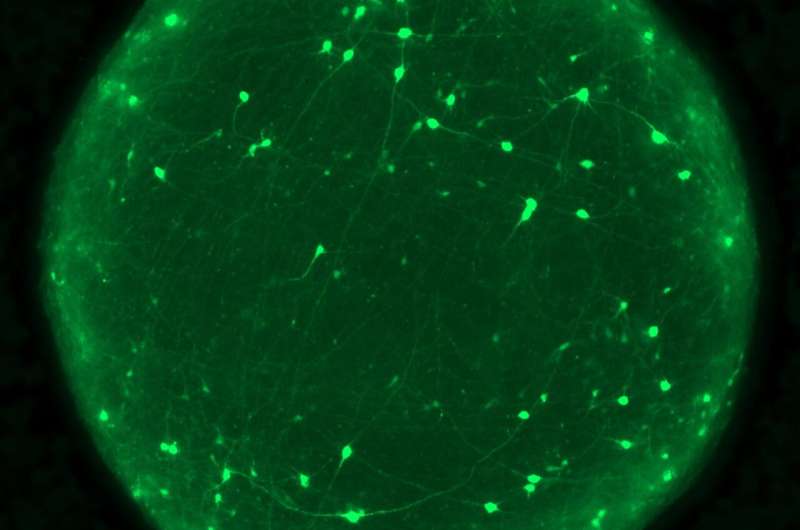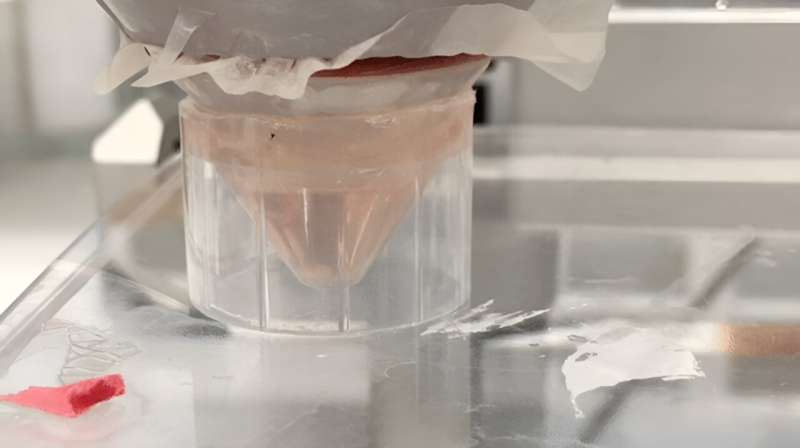This article has been reviewed according to Science X's editorial process and policies. Editors have highlighted the following attributes while ensuring the content's credibility:
fact-checked
peer-reviewed publication
trusted source
proofread
Organoids reveal an overlooked protein's role in traumatic brain injury

Clinicians often find limited success in treating patients with traumatic brain injury, a condition long linked to contact sports and military services. A new study, published in the journal Cell Stem Cell, may offer new clues to better solutions.
Scientists found a protein, TDP-43, that appears to drive nerve damage right after injury. Moreover, blocking a certain cell surface protein can correct faulty TDP-43 and curb nerve death in mouse and human cells.
"There's really nothing out there that can prevent the injury or trauma to the brain that cause nerve cell damage," says corresponding author Justin Ichida of the University of Southern California.
"In more acute stages, patients can have difficulty concentrating and have extreme sensitivity to light and noise. Long term, there is a strong correlation between traumatic brain injury and neurodegenerative diseases, which can ultimately be fatal."
To untangle what happens at impact, the researchers grew brain organoids—pinhead-sized, tiny clusters of human neural cells that behave like a brain. They then hit the organoids with ultrasonic pulses, mimicking severe traumatic brain injuries. Previous research has suggested that a protein called tau may underlie the nerve damage, but Ichida's research says there's another player.
His team found that TDP-43, which edits the genetic script that carries protein-making DNA instructions, wanders astray in injured organoids and causes nerve death. In healthy cells, TDP-43 usually resides within the nucleus, where genetic materials are located. But after injury the protein leaks out to the surrounding cytosol and cannot carry out its job.

The results showed that neurons deep in the cortex of the brain are particularly vulnerable to trauma, and genetics can affect how the disorder progresses. Organoids derived from patients with a genetic risk of neurodegenerative diseases responded to the injury more strongly with faultier TDP-43 compared to healthy ones. The findings might help explain why some individuals are at higher risk for developing these diseases after trauma.
"We then tested every gene in the human genome to see if we could rescue that injury by suppressing any individual gene," says Ichida. The screening came back with a hit—KCNJ2, a gene that encodes the mechanosensory channel protein on cell surfaces. "If we suppressed the gene, it reversed all the problems associated with the injury and kept the nerve cells alive."
Blocking both KCNJ2 gene activity and its protein, respectively, raised the neurons' survival rate in organoids. The team saw similar effects in mouse models of traumatic brain injury when they targeted KCNJ2, reducing misplaced TDP-43.
Treating injured organoids from patients with neurodegenerative disease risk using KCNJ2 protein blockers before injury not only reduced nerve death but also lowered the TDP-43 buildup in cells. The results suggest dampening KCNJ2 activity may protect the brain from trauma.
About 5 million Americans live with traumatic brain injury-related disabilities. With more research, Ichida can foresee new opportunities for improving prevention, diagnosis, and treatment. The findings may help inform people of their genetic risks and guide safety measures. TDP-43 may also serve as a biological marker to detect traumatic brain injury and monitor the damage one day.
"Our study suggests that one of the more effective ways of preventing the devastating effects of traumatic brain injury might be to fix TDP-43 and prevent its mislocalization early after injury," says Ichida.
More information: KCNJ2 inhibition mitigates mechanical injury in a human brain organoid model of traumatic brain injury, Cell Stem Cell (2024). DOI: 10.1016/j.stem.2024.03.004. www.cell.com/cell-stem-cell/fu … 1934-5909(24)00085-7





















